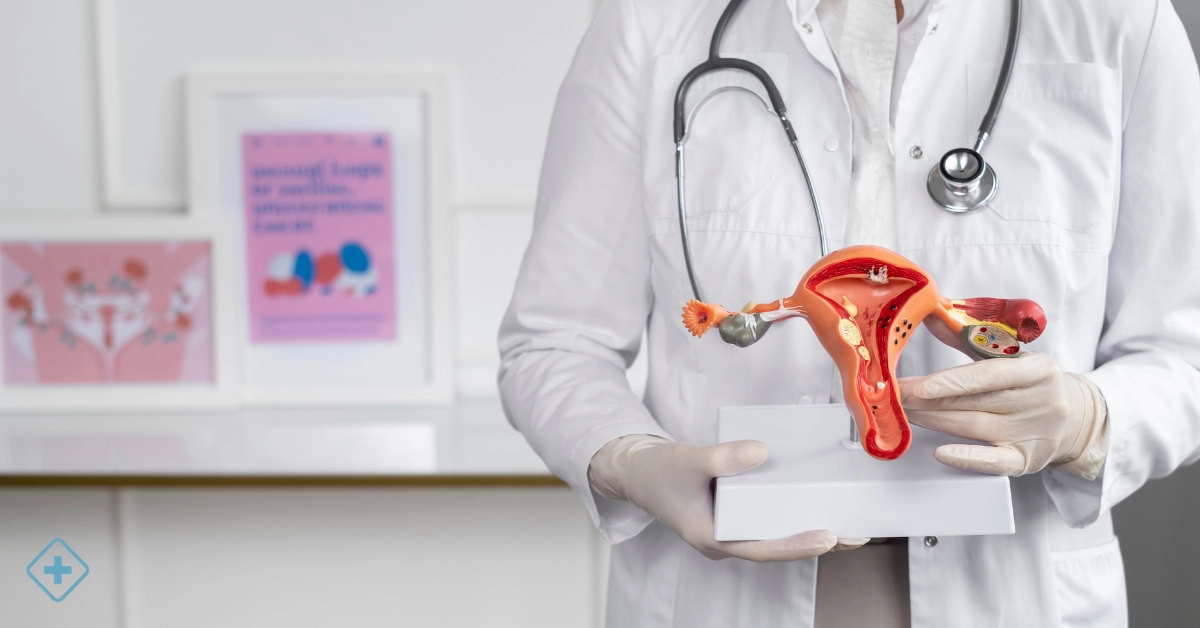
Chronic Pelvic Pain
Causes, Symptoms and Treatment

Chronic Pelvic Pain usually arises in the lower abdomen; the pain evolves for more than six months. Severe pain can affect how you do your daily activities.
Women may experience pain during menstrual periods or when having sex. Some women may have more than one cause of pelvic pain at the same time.
Chronic Pelvic Pain can signify that there is a problem with one of the pelvic area's organs, such as the vagina, the uterus, the cervix, etc. In men, it can be the cause of a prostate problem.
In men and women, it can be a symptom of a problem or infection of the urinary tract, rectum, bones, intestine, or muscles.
Causes
-
Endometriosis takes place when the lining of the uterus grows in other parts of the body. During the menstrual period, this tissue swells and bleeds, as does the lining of the uterus. This is usually painful. Scar tissue may form in the pelvic area
-
Chronic pelvic inflammatory disease
-
Fibroids are non-cancerous uterine growths. May press down or feel heavy
-
Musculoskeletal problems, conditions that damage bones, joints, and connective tissues
-
Ovarian remains
-
Irritable bowel syndrome
-
Interstitial cystitis, this disease is associated with chronic pain in the bladder and frequent urination
-
Pelvic congestion syndrome
-
Psychological factors, some of these can be depression, stress, a history of sexual abuse, etc
Symptoms
The main symptom of Chronic Pelvic Pain is the pain itself; it is usually intense and constant; the frequency and severity can vary. It depends on the cause of the pain and the person who suffers it. In the case of women, they may feel pain during sexual intercourse. Pain can come and go, or be present every day.
Diagnosis of Chronic Pelvic Pain
The Gynecologist is the specialist in treating Chronic Pelvic Pain in women, and the Urologist is the specialist in treating this condition in men. Both specialists will perform a physical exam and do various tests and questions about your symptoms, lifestyle, and medical history.
Following are some of the test that could be performed, depending on the sex and case of the patient
-
Blood test
-
A pelvic test can help detect signs of infections, abnormal growths, or tight pelvic floor muscles
-
Laboratory tests, after the pelvic test, the doctor may order a laboratory test to detect possible infections, such as chlamydia or gonorrhea
-
Ultrasound helps to locate cysts or masses in the uterus, ovaries, or fallopian tubes
-
Imaging tests help detect abnormal growths or structures
-
Urological tests
-
Laparoscopy, the doctor can view the pelvic organs and look for abnormal tissues or other signs of infection
Treatment of Chronic Pelvic Pain
The treatment provided will be according to the results obtained in the diagnosis. The Gynecologist or Urologist will help you determine the most appropriate type of treatment for you.
Common treatment options include:
-
Medications such as analgesics, antibiotics, antidepressants, hormonal treatments
-
Therapies
-
Physiotherapy helps you to do relaxation exercises, massages, stretching, which help control pain
-
Biofeedback helps you detect areas of tense muscles and learn techniques to relax them
-
Neurostimulation, a device is implanted that blocks the nerve pathways, so that the pain signal cannot reach the brain, depending on the cause of the pelvic pain, the doctor may suggest it
-
Injections, if your doctor locates specific points where you feel pain, he or she may inject an anesthetic medicine at the painful points (trigger points)
-
Psychotherapy, if the pain is related to an emotional cause such as sexual abuse, depression, or another, psychotherapy can help you manage strategies to deal with the pain
-
Surgery, to repair an undiagnosed problem causing chronic pelvic pain, surgery may be required
-
Laparoscopic, the doctor may suggest this technique for cases of endometriosis; it will remove the endometrial tissue
-
Hysterectomy, in rare or severe cases, the doctor may recommend removing the uterus, ovaries, or fallopian tubes. The doctor will discuss all possible complications before suggesting this procedure
Living with Chronic Pelvic Pain
When you have already been diagnosed with Chronic Pelvic Pain, follow the treatment provided by your Gynecologist or Urologist.
Some things to consider that could help improve the quality of life and control Chronic Pelvic Pain are:
-
Go to physical therapy.
-
Perform massages
-
Do relaxation exercises; these can help you reduce pain and relieve tension.
-
Meditate and take a deep breath
¿When do you have to see a doctor?
Make your appointment with your doctor if you have any of the symptoms mentioned above or notice another abnormal symptom. Depending on the possible cause of the pain, the doctor will send you to the specialist doctor.
The Gynecologist is the specialist in treating Chronic Pelvic Pain in women, and the Urologist is the specialist in treating this condition in men.
When consulting your Gynecologist or Urologist, keep a record of your pain with a detailed description of the symptoms, duration, and what you think triggered them. Also, mention any medications you are taking.
Health Library
Gynecology and Obstetrics

Polycystic Ovary Syndrome
The exact causes of PCOS are not fully understood, but it is believed to be a combination of genetic and hormonal factors
Pap Smear
The Pap Smear is an essential procedure for the early prevention and detection of Cervical Cancer
Managing High-Risk Pregnancy
In high-risk pregnancy, there's an increased likelihood of encountering health complications.
HPV infection: Human Papillomavirus (HPV)
Most people with HPV infection do not show symptoms, making detection difficult.
- ¿Necesitas una cita con un Especialista?
- llámanos
- escríbenos
- Conéctate





